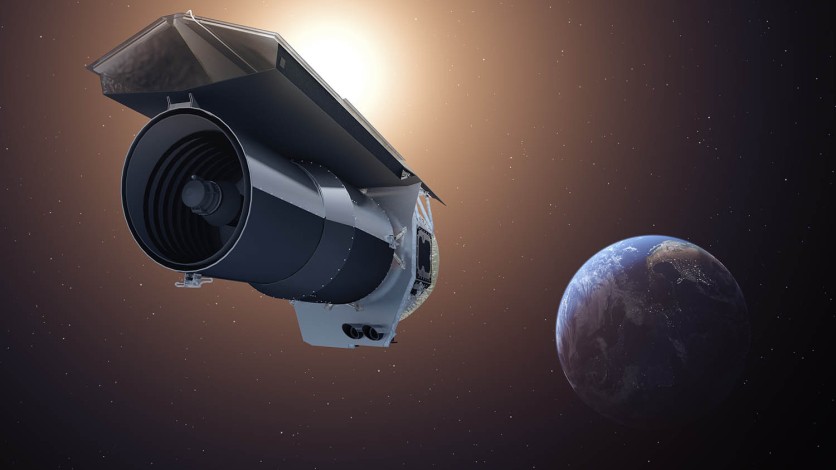A small space company is now selected to headline the development of a rescue program for the NASA Spitzer Space Telescope after it stopped its functions due to issues and is left drifting in space. Rhea Space Activity is developing a "Spitzer Resurrector Mission" that aims to repair the spacecraft and help it regain its functions for further operations.
Rhea Space Activity has multiple partners on this, and it was recently awarded a contract from SpaceWERX to help resurrect one of NASA's remaining "Great Observatories."

Rhea Space Activity and Partners to Rescue NASA's Spitzer
In the latest press release, Rhea Space Activity has been granted a Phase I Small Business Technology Transfer (STTR) award and is now pursuing a Phase II STTR under the SpaceWERX Orbital Prime Program. The company aims to develop the groundbreaking Spitzer Resurrector Program, a mission that involves traveling to NASA's Spitzer Telescope currently drifting in space, and restoring it to operational status.
The Spitzer Resurrector Program is set to revolutionize the field of space technology and exploration. According to Ars Technica, this is by utilizing state-of-the-art "In-space Service Assembly and Manufacturing" (ISAM) techniques, which are being explored by the Department of the Air Force (DAF) and the United States Space Force (USSF), Rhea Space Activity plans to refurbish the Spitzer Telescope and bring it back to life.
Once the Spitzer Resurrector reaches the drifting telescope, it will perform meticulous repairs, install advanced components, and enhance the telescope's capabilities. Rhea Space Activity has received a total of $250,000 for this development.
Rhea's Spitzer Resurrector Mission to Launch by 2026
The company envisions launching the Spitzer Resurrector by the year 2026.
To accomplish this ambitious goal, Rhea Space Activity has partnered with several renowned institutions and industry leaders. The Smithsonian Astrophysical Observatory, Johns Hopkins University Applied Physics Laboratory, Blue Sun Enterprises, and Lockheed Martin have all joined forces to support the project.
NASA's Spitzer Telescope and its Mission
NASA's Spitzer Telescope, originally launched in 2003, has made significant contributions to our understanding of the universe. However, after more than two decades in space, the telescope is showing signs of aging and technical difficulties.
The Spitzer Resurrector Program aims to overcome these challenges by implementing cutting-edge repair and upgrade strategies.
Once the Spitzer Resurrector reaches the drifting telescope, it will perform meticulous repairs, install advanced components, and enhance the telescope's capabilities. This mission not only holds the potential to revive the Spitzer Telescope but also serves as a valuable testbed for future in-space servicing missions.
The successful restoration of the Spitzer Telescope will mark a significant achievement in space technology and pave the way for future missions that rely on in-space servicing and repair capabilities. Moreover, it will extend the lifespan of a valuable scientific instrument, enabling further exploration of distant galaxies and deep space phenomena.
Related Artice : Spitzer Space Telescope Detects A Debris Field From Two Planets That Crashed Into Each Other

ⓒ 2025 TECHTIMES.com All rights reserved. Do not reproduce without permission.




